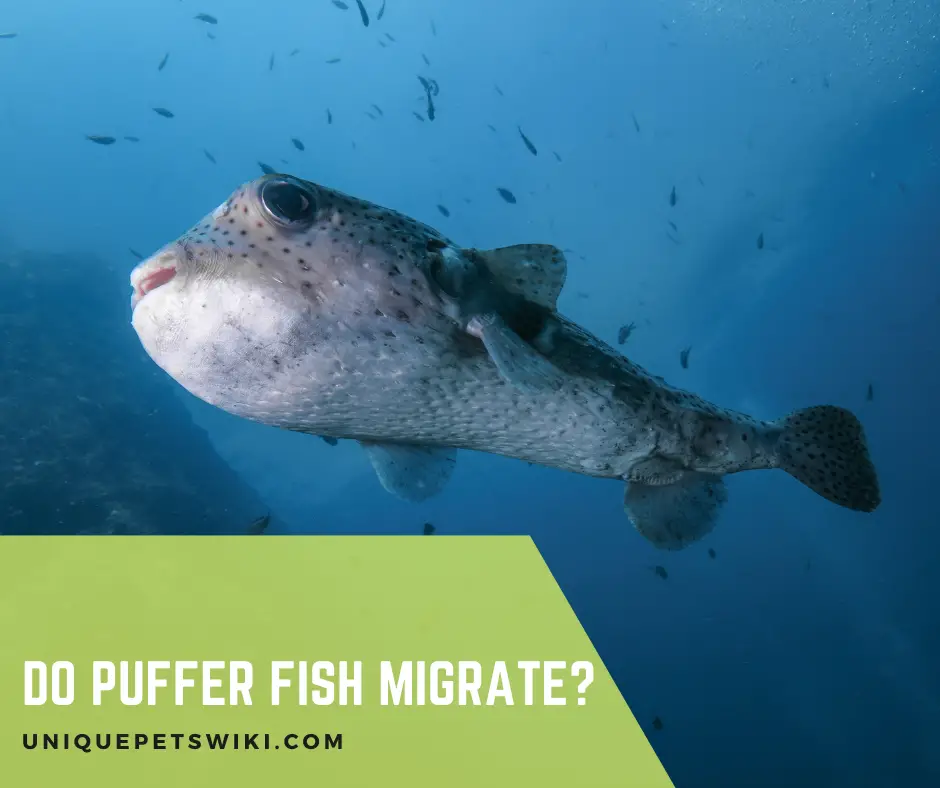Many varieties of fish migrate and migration is an important part of their lifecycle. But do puffer fish migrate?
It is natural for puffer fish enthusiasts to ask this question. After all; puffer fish are known to live both in salt water and fresh water. Some varieties even move from one environment to another.
In this guide, we cover the answer to the question: do puffer fish migrate? We will also cover other FAQs like where puffer fish live.
Do Puffer Fish Migrate?
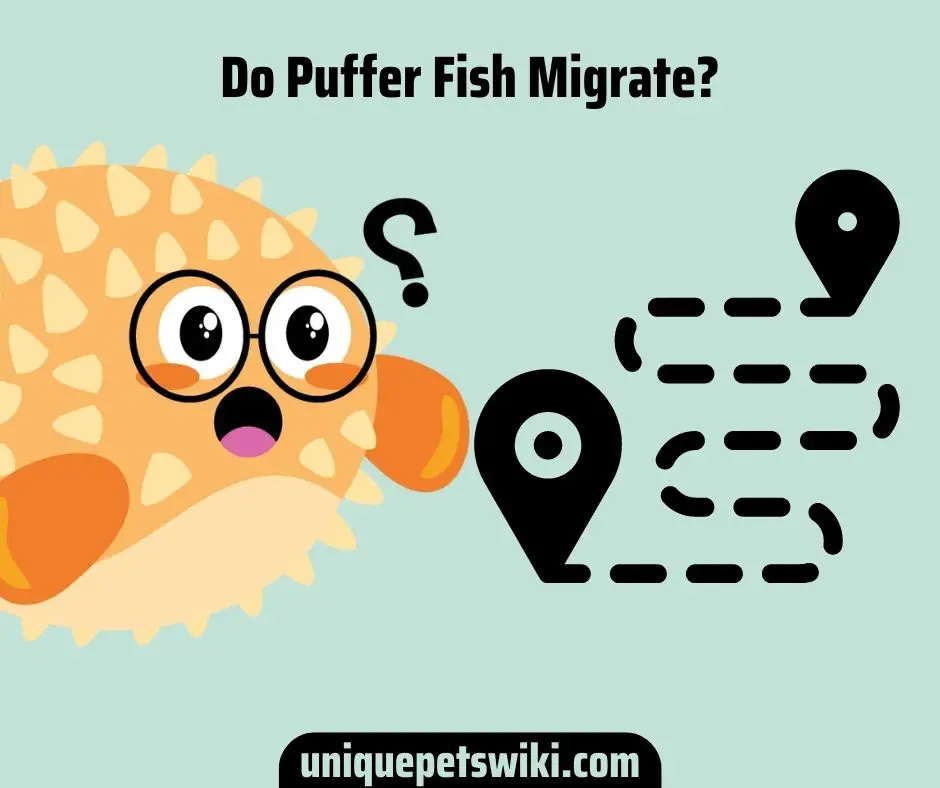
Pufferfish are not migratory fish. They mostly complete their lifecycles in one place. Some varieties of pufferfish might move from salt water to fresh water and back but this is not your typical migration.
Fish migration consists of fish moving in large numbers from one place to another – between river and sea – for the purpose of finding food or for breeding and laying eggs.
However, puffer fish do not display such migration. So even though you might find a puffer fish in a region where it does not belong, it is not the typical migratory behavior as seen in certain fish species. It could be due to pollution or climate change that may have caused a loss of its natural habitat or a reduction in natural resources.
Fish Migration – Definition and Meaning
Fish migration is the mass relocation of schools of fish from one area to another in search of a better environment or food.
Typically, fish like salmon migrate from the ocean to rivers to spawn and produce babies. On the way, they undergo several changes including changes in their gills so they can handle the freshwater. Migrating fish also undergo other changes like color changes and transformations in their scales which helps them adapt to the new environment.
Reverse fish migration from the river to the sea is also seen in certain fish species. For example, freshwater eels migrate from rivers to salt water for spawning.
Which Are Migratory Fishes?
Migratory fish species include Atlantic Salmon, Sea Trout, Nase, Shad, Whitefish/Houting, Lamprey, and Eels. Tunas, certain Sharks, Billfish, and the Pacific Mahi-Mahi also migrate.
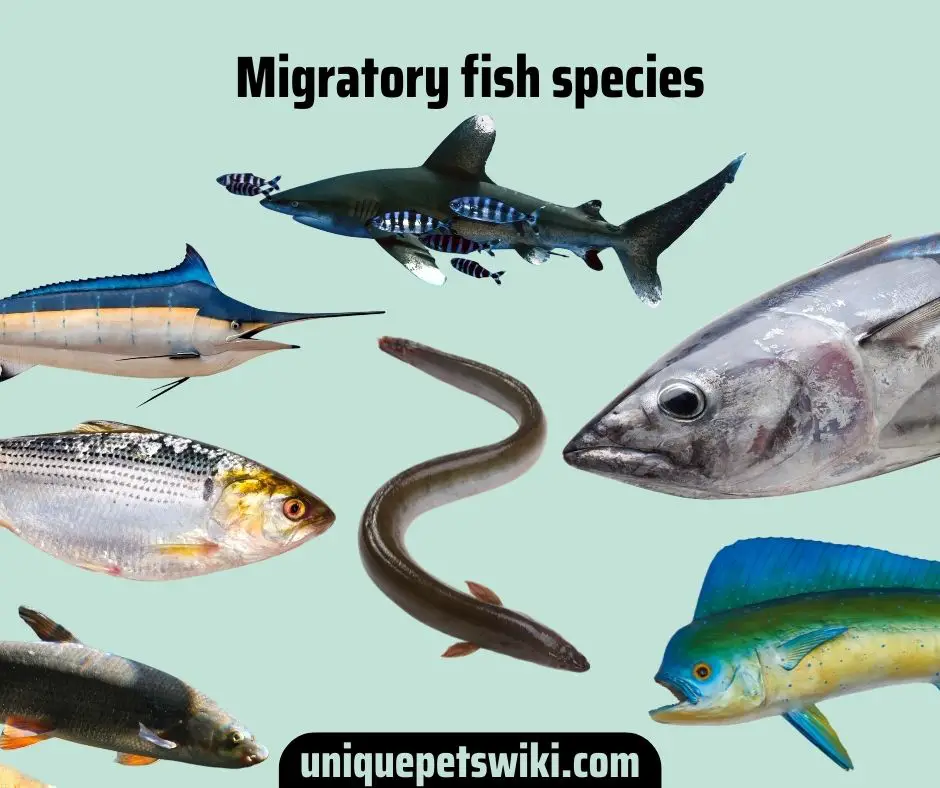
Why do Fish Migrate?
Fish mainly migrate for the purpose of spawning which aids in the continuation of their species. Fish migration also helps the fish relocate to favorable environmental conditions for spawning.
Some species migrate for better feeding opportunities. Sometimes though, the reasons for migration are unclear.
What is the typical migration period?
Fish migration can be a daily or annual process with some migrations lasting over several years. The migratory distances can range from a few miles to thousands of miles.
European Eels are known to migrate the longest – they cover nearly 10,000 miles to spawn in the Sargasso Sea and back to the rivers of North Russia or North Africa. Their journey sometimes takes nearly 2 years!
Where Do Most Puffers Live?
Pufferfish are warm water creatures living in tropical and subtropical waters. There are more than 189 varieties of pufferfish found around the world and most of them live near coral reefs or near rocks on the bottom of the sea.
Most varieties of puffers prefer shallow waters. Adult puffers are often found near the land than in the open sea. Some are completely freshwater species – nearly 30 types of pufferfish are known to complete their entire lifecycles in rivers and lakes.
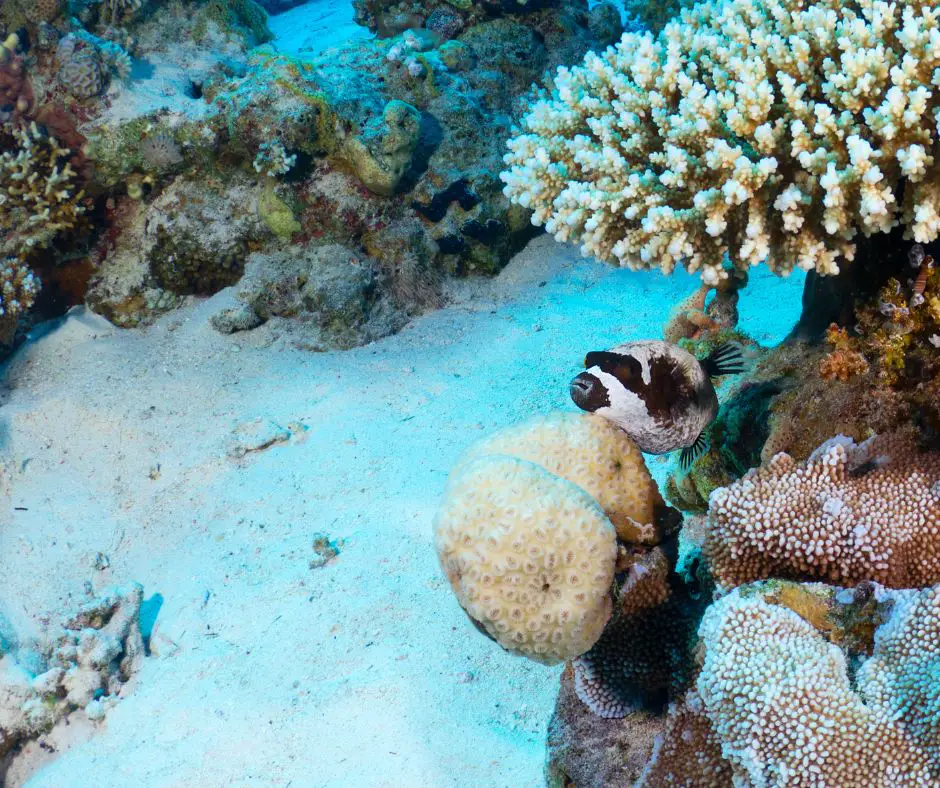
Some pufferfish move from saltwater to freshwater but this is not your typical fish migration. It is not done in a group – which is the typical migratory fish behavior. You also have some pufferfish living in estuaries and brackish water between the ocean and rivers.
Since pufferfish like to swim in warm waters they are abundant around the tropics and subtropics. A few varieties are found in temperate zones. However, no puffer fish are found in the cold, freezing polar/ frigid zones.
How Do Puffer Fish Move Around?
Unlike other migratory fish which are fast-moving, puffer fish move very slowly. They use their tail fins as rudders (the part that helps steer a boat) while also using their undulatory pectoral fin motion to locomote. Their curved tails also help in the steering action.
Pufferfish also use their dorsal and pectoral fins for swimming. These fins oscillate to help the fish reach speeds of 3 body lengths per second.
When a pufferfish feels threatened it swallows water and puffs up to almost 3 times its normal size. In the puffed-up state, this already clumsy swimmer is unable to swim at all. However, it can still utilize the currents of the ocean water to drift away from its threat. Thankfully, the puffed-up pufferfish looks quite menacing, so even the larger predators prefer to stay away from it.
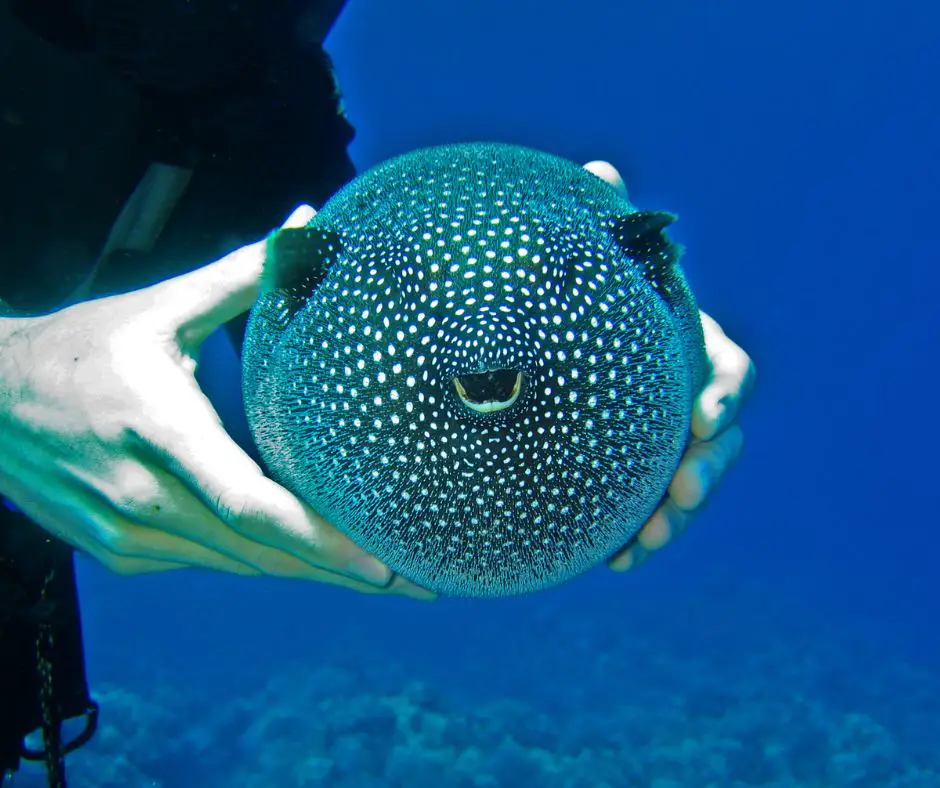
Why Do Puffer Fish ‘Migrate’?
As mentioned earlier, the movement of pufferfish from one place to another (sometimes between salt water and fresh water) is not typical fish migration. Rather, it is done to fulfill a need or escape a threat.
Recently, climate changes and ocean pollutants are destroying the natural habitats of pufferfish. More specifically, coral reefs which are the natural habitats of pufferfish are under tremendous stress. Coral reefs are mainly being destroyed due to declining water quality, overfishing, climate change, unsustainable coastal development, and pollution.
Most pufferfish are solitary creatures. Unlike migratory fish that migrate in large groups, pufferfish move about individually.
Some pufferfish found along the west coast of the USA move due to El Nino – the changing weather patterns that cause oceans to warm up. Since pufferfish prefer warm water, they traveled from Baja California to Monterey Bay in the winter months.
Humans are greatly responsible for the changes in pufferfish distribution. Due to globalization which has increased shipping and fishing, many non-native species of puffers are now swimming into parts of the Mediterranean Sea through the Suez Canal.
Some of these poisonous species have killed several people in countries like Lebanon. Many have bitten through fishermen’s nets with their sharp teeth, causing a nuisance to fishermen.
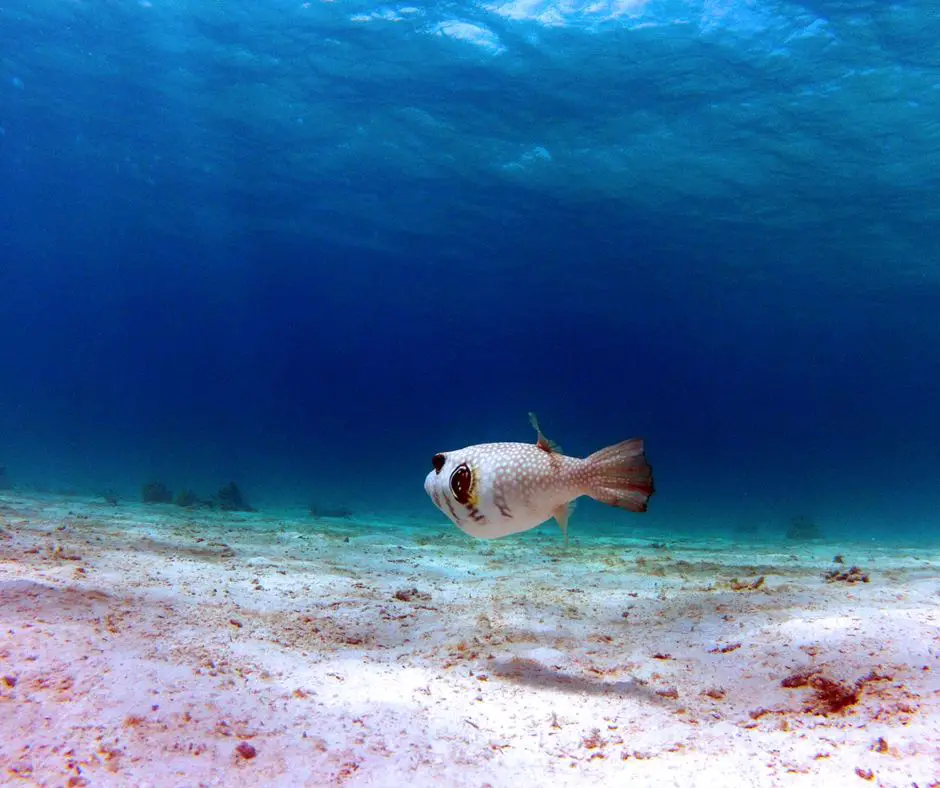
FAQs
Do puffer fish migrate or hibernate?
Pufferfish neither hibernate nor migrate. Sometimes though, they may move from place to place due to factors like climate changes, changing weather patterns, overfishing, destruction of their natural habitats, pollution, etc. This movement is not your typical fish migration which is usually done in large groups.
Does a puffer fish move?
Pufferfish can move and swim like regular fish. However, they are slow-moving and clumsy swimmers.
How long can puffer fish live out of water?
Most pufferfish die within 3-4 minutes out of water. Once they are outside water, they tend to swallow air and inflate. If the inflated air remains trapped inside its body for long, the pufferfish might die even if it is released back into the water.
Does puffing up hurt pufferfish?
No, the action of puffing up does not hurt a puffer fish. However, since they puff up to nearly thrice their normal size, it can stress their system considerably.
Conclusion – Do Puffer Fish Migrate?
Pufferfish do not migrate and neither do they hibernate. Some species complete part of their lifecycles in freshwater and part in salt water.
Sometimes, pufferfish move in search of warmer water or for food. Changing weather patterns, diminishing coral reefs, and over-fishing are causing pufferfish to move to newer environments.
